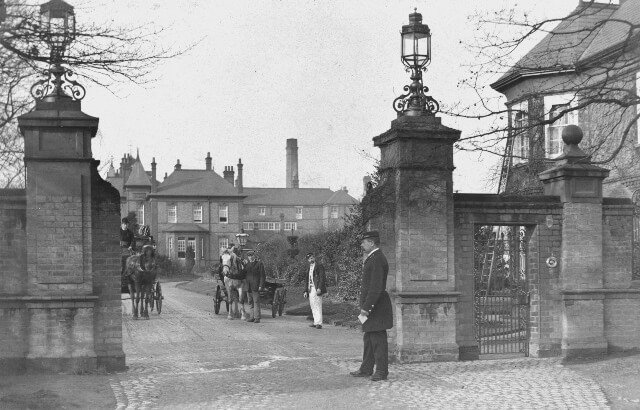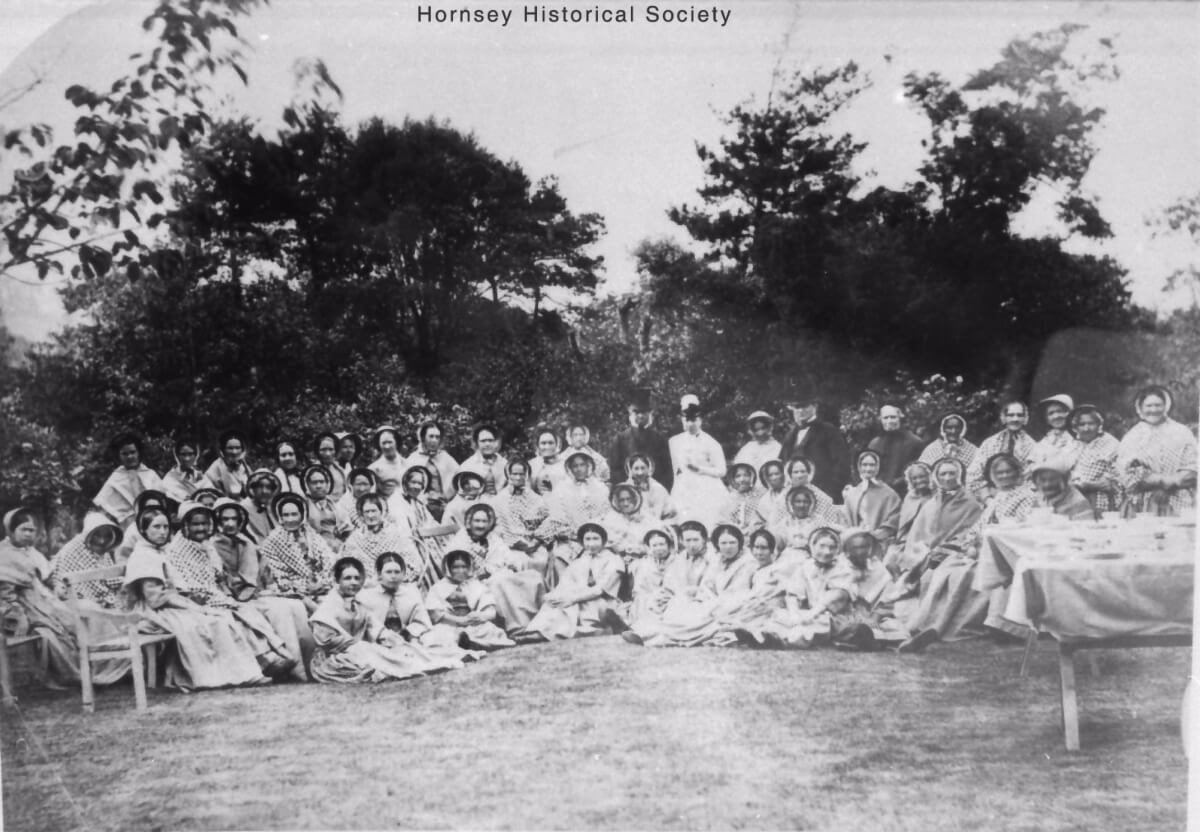
For many of us it is a shock to read the Tender (Hornsey Journal 30 May 1919) for the supply of provisions to a workhouse. Surely the workhouse, such a spectre hanging over the lives of the Victorian poor, had gone by 1919? If it hadn’t, why was the workhouse in Edmonton not in Hornsey? When did this degrading system end?
Poor Law
For many centuries each parish was responsible for looking after those who, for whatever reason, could not look after themselves – this was called Poor Relief. The Act for the Relief of the Poor 1601 (Elizabeth I’s reign), firmed up the parish’s responsibility. A Poor Law Rate was to be levied on property to provide funding for maintaining the Poor, materials were to be purchased to provide work for them, orphans, the elderly, deaf, blind and ‘lunatics’ etc. were to be housed and provided with work. This was called outdoor relief.
Knatchbull’s Act 1723 enabled parishes to build a workhouse, where anyone who applied for Poor Relief was obliged to live and to undertake menial work to help meet the costs of their keep – ‘indoor relief’. It was designed to discourage able-bodied persons from living off the parish. This was called the ‘workhouse test’. Unpaid, local property owners called Overseers of the Poor were appointed to administer the Poor Law.
Hornsey’s workhouse
The Hornsey Vestry Minutes tell the story. The administration of the parish was divided into ‘Hornsey Side’ and ‘Highgate Side’. Two Overseers of the Poor were appointed for the Hornsey Side. A permanent workhouse was opened in 1743 on what is now Priory Road N8 in the vicinity of Priory Avenue. A Master of the Workhouse was employed and a Mistress also by the 1750s (usually husband and wife).
In 1744 a tall fence was built around the workhouse and inmates could not leave without permission. Four years later it was decided that the Overseers should get badges for the inmates so that their identification as Paupers (recipients of Relief) was clear to all.
In March 1787 the Parish Clerk wrote that ‘Publick Papers’ were to advertise contracts with the parish for butchers, bakers, cheesemongers, grocers and linen drapers. From 1 May 1788 a ‘Surgeon, Apothecary and Man midwife’ for the Poor was to be appointed at 12 guineas a year for services, drugs and medicines. The workhouse was added to over time but it became dilapidated and expensive to maintain by the end of the 1820s.
Edmonton Poor Law Union
The Poor Relief system had broken down in England and Wales by the 1820s. Industrialisation led to a mobile population, much increased in size. Individual parishes could not cope and attitudes to any non-workers had hardened.
The Poor Law Amendment Act 1834 brought in harsh changes. Parishes were joined together to provide Union Workhouses where Poor Relief was extremely basic and men, women and children were strictly segregated. The regime was deliberately intended to deter everyone but the most desperate. The era of Oliver Twist and the Bumbles had arrived.
In February 1837 Hornsey parish (including Highgate) joined with Edmonton, Enfield, Hampstead Tottenham, Waltham Abbey and Cheshunt to form the Edmonton Poor Law Union overseen by a Board of Guardians. Most of the existing parish workhouses were unsuitable. After much discussion a purpose-built new Union workhouse was built at Tanners End in Edmonton. It opened in January 1842 at a cost of £15,819 and could accommodate 500 inmates. The old Enfield workhouse in Chase Side was used as school and an infirmary was added in 1844. Hampstead became an independent union in 1848.
By the last quarter of the 19th century conditions in the workhouse were improving slightly. Inmates were allowed small ‘luxuries’ such as books, newspapers and the occasional outing. The photograph below, possibly taken in the 1860s, shows the Hornsey ladies who were in the Edmonton Union Workhouse on a visit to their home parish where they were entertained to tea by the Rector of Hornsey, Canon Richard Harvey. He witnessed many Poor Law changes during his years in Hornsey 1829 – 1880.

Twentieth century changes
From 1904, babies born in the Edmonton Workhouse had the address 77 Bridport Road written on their birth certificates to protect them from disadvantage in later life. In 1913 official documents referred to workhouses as ‘Poor Law Institutions’. In 1919 the central Local Government Board, which had supervised the work of the central Poor Law Board, was replaced by the Ministry of Health.
The beginning of the end for the workhouse came in 1930 when the 1929 Local Government Act came into effect. Boards of Guardians were abolished and some workhouses were sold, demolished or fell into disrepair. However, many became Public Assistance Institutions under the control of local authorities. They continued to accommodate the elderly, the chronic sick, single parent families and vagrants.
The end of the workhouse
It was not until the National Assistance Act of 1948 that the last vestiges of the Poor Law system disappeared and with them the fear of ending up in the workhouse. It is significant that in 1948, Aneurin Bevan, Minister of Health in the Labour Government and a lifelong campaigner for social justice, chose to announce the birth of the National Health Service from a former workhouse in East Glamorgan, South Wales.
What’s the location of the Edmonton Union Workhouse? This is now an NHS hospital like so many workhouse infirmaries. It’s the North Middlesex University Hospital on the old workhouse site between Stirling Way (the North Circular Road/A406), Bull Lane and Bridport Road.
Further reading
For more information about the Poor Law and workhouses read Peter Higginbottom’s ‘Workhouse’ website which has a list of his books.
Image credits
North Middlesex Hospital, formerly the Edmonton Workhouse – with kind permission of Enfield Local Studies and Archive